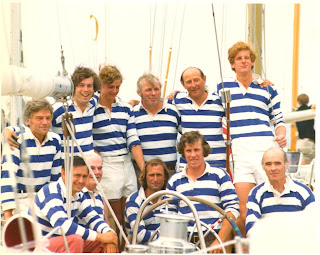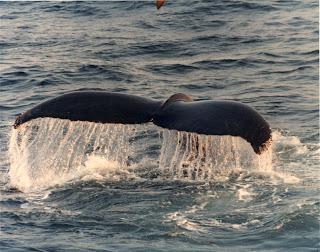Guinevereous Liraki

 The British Museum of Natural History gave each yacht entered in the 1968 trans-atlantic race a log book asking each crew to record sightings of mammals including where,when, and under what conditions the sightings occurred. There were many sightings, I had forgotten until now, I described the porpoise in the photo, Geroge Moffett, the owner of the boat turned the log in at the end of the race. About a year later he wrote to me that the porpoise had been identified as a unique species within the family of Phocoenidae and that the Museum had attributed it the name “Guinevereous Liraki”
The British Museum of Natural History gave each yacht entered in the 1968 trans-atlantic race a log book asking each crew to record sightings of mammals including where,when, and under what conditions the sightings occurred. There were many sightings, I had forgotten until now, I described the porpoise in the photo, Geroge Moffett, the owner of the boat turned the log in at the end of the race. About a year later he wrote to me that the porpoise had been identified as a unique species within the family of Phocoenidae and that the Museum had attributed it the name “Guinevereous Liraki”
windsurfing
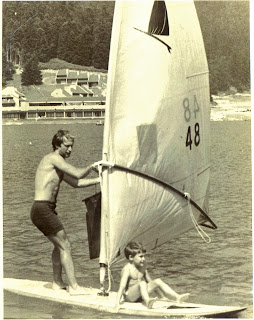

 I had the first windsurfer on the East coast(sail #48) and won the first New England Championships, which qualified me for the world championship held on Mission Bay, San Diego,CA.(November 1972) I finished sixth, six points out of first, tight racing. As a consequence, I became friendly with Hoyle and Diane Schewitzer;having many wonderful adventures with them. Hoyle has been credited with inventing the sport and the board.
I had the first windsurfer on the East coast(sail #48) and won the first New England Championships, which qualified me for the world championship held on Mission Bay, San Diego,CA.(November 1972) I finished sixth, six points out of first, tight racing. As a consequence, I became friendly with Hoyle and Diane Schewitzer;having many wonderful adventures with them. Hoyle has been credited with inventing the sport and the board.
Lirakis safety Harness
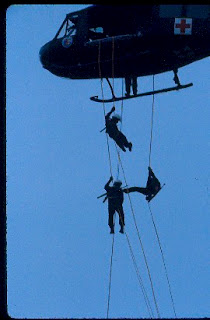

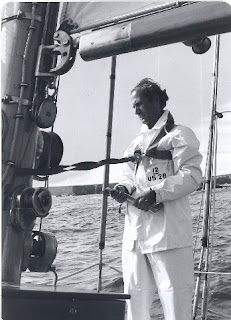
 The 1972 Bermuda race convinced me there was a better design for a safety harness, I am an inveterate tinkerer, always trying to improve on something. Simplicity is the key. Over the next few years I worked in my spare time on developing and refining my ideas. The first harness was sold in 1978. Shortly thereafter I left my job and started producing them full time, I continued to sail until finally the company grew to the point where I was forced to choose.
The 1972 Bermuda race convinced me there was a better design for a safety harness, I am an inveterate tinkerer, always trying to improve on something. Simplicity is the key. Over the next few years I worked in my spare time on developing and refining my ideas. The first harness was sold in 1978. Shortly thereafter I left my job and started producing them full time, I continued to sail until finally the company grew to the point where I was forced to choose.
1966



 1966 the year I graduated from high school. In March of that year I traveled to Europe on a hockey team modestly called ” The United States All Stars.” A group assembled from schools principably around the Boston area. The photo taken in Sweden after our toughest match of the tour. The majority of the team went on to Harvard, and four of them signed with NHL teams.
1966 the year I graduated from high school. In March of that year I traveled to Europe on a hockey team modestly called ” The United States All Stars.” A group assembled from schools principably around the Boston area. The photo taken in Sweden after our toughest match of the tour. The majority of the team went on to Harvard, and four of them signed with NHL teams.
1976 Mediterranean
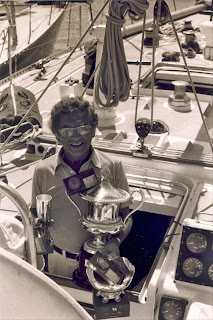

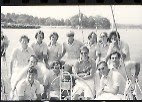 Another even year, Bermuda Race time again. A new “Charisma” designed for Jessie Phillips by Sparkman&Stephens. Olin always said that Jesse was his favorite client. The Bermuda race turned out to be the worst finish I have ever tallied in my sailing career. a number of factors contributed to that.
Another even year, Bermuda Race time again. A new “Charisma” designed for Jessie Phillips by Sparkman&Stephens. Olin always said that Jesse was his favorite client. The Bermuda race turned out to be the worst finish I have ever tallied in my sailing career. a number of factors contributed to that.
Fall 1975
 Following Cowes Week aboard “Gitana VI” I raced the Fastnet with “Guia” belonging to Georgio Falk. “Guia” had been built for the previous Admiral’s Cup as “Ginko” a 44 foot Bob Miller/Ben Lexan design. A light fast boat, having scored well in 1973 and had won an inshore race in 1975. Again, a mixed crew of talented Italians and French, and again English was the language on Deck, except when faced with a crisis.
Following Cowes Week aboard “Gitana VI” I raced the Fastnet with “Guia” belonging to Georgio Falk. “Guia” had been built for the previous Admiral’s Cup as “Ginko” a 44 foot Bob Miller/Ben Lexan design. A light fast boat, having scored well in 1973 and had won an inshore race in 1975. Again, a mixed crew of talented Italians and French, and again English was the language on Deck, except when faced with a crisis.

1974-1975 England
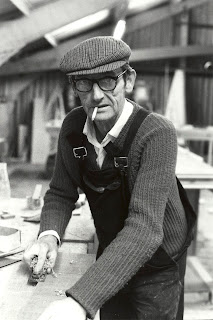 In the fall of 1974, We moved to the Isle of Wight, England, where I started work at Souter’s Shipyard, lofting and buildiing cold-moulded boats. The face at the right is of a by-gone era. I skippered a boat, the prototype of the Swan 41, called “Gunfleet of Hamble”, We were vying for a spot on the English Admiral’s Cup team. We practiced, the selection trials were fiercely competitive. Going into the final 200 mile race, we were tied for third with Yeoman, Robin Aisher’s boat. All we had to do was beat them and we were in. we could effectively ignore the other boats. The owner, got nervous and changed three of the crew, who had helped us get here, and listened to an “expert” weather consultant, claiming there would be light air all weekend. we left our heavy air sails ashore along with our steady crew. We did not make the cut.
In the fall of 1974, We moved to the Isle of Wight, England, where I started work at Souter’s Shipyard, lofting and buildiing cold-moulded boats. The face at the right is of a by-gone era. I skippered a boat, the prototype of the Swan 41, called “Gunfleet of Hamble”, We were vying for a spot on the English Admiral’s Cup team. We practiced, the selection trials were fiercely competitive. Going into the final 200 mile race, we were tied for third with Yeoman, Robin Aisher’s boat. All we had to do was beat them and we were in. we could effectively ignore the other boats. The owner, got nervous and changed three of the crew, who had helped us get here, and listened to an “expert” weather consultant, claiming there would be light air all weekend. we left our heavy air sails ashore along with our steady crew. We did not make the cut.
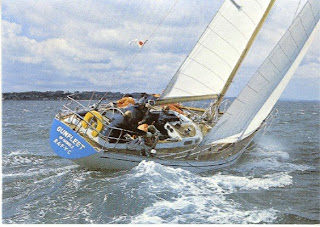



1974
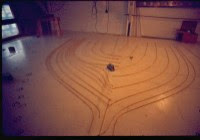
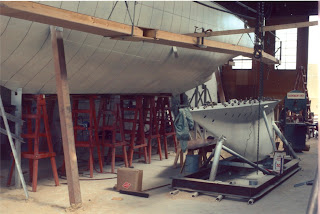
 1974 was both a Bermuda race year and an America’s cup year. I lofted and built “Courageous” US 26, designed by S&S, the last two time defender of the America’s Cup at Minneford’s Yacht Yard, in City Island,NY.The story really started in 1973.
1974 was both a Bermuda race year and an America’s cup year. I lofted and built “Courageous” US 26, designed by S&S, the last two time defender of the America’s Cup at Minneford’s Yacht Yard, in City Island,NY.The story really started in 1973.
Western Arctic
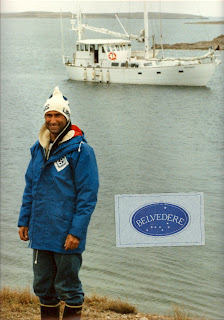
 July 1984 I was invited to go to the Beaufort Sea, the western arctic by boat, a 65 foot motorsailer belonging to John Bockstoce,” Mr. Arctic.” A completely new adventure for me, non racing. Such an interesting group, I read everything I could before I joined the boat.
July 1984 I was invited to go to the Beaufort Sea, the western arctic by boat, a 65 foot motorsailer belonging to John Bockstoce,” Mr. Arctic.” A completely new adventure for me, non racing. Such an interesting group, I read everything I could before I joined the boat.
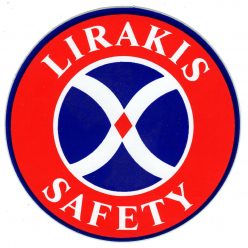




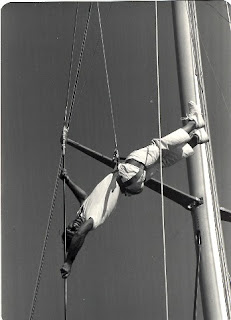.jpg)




